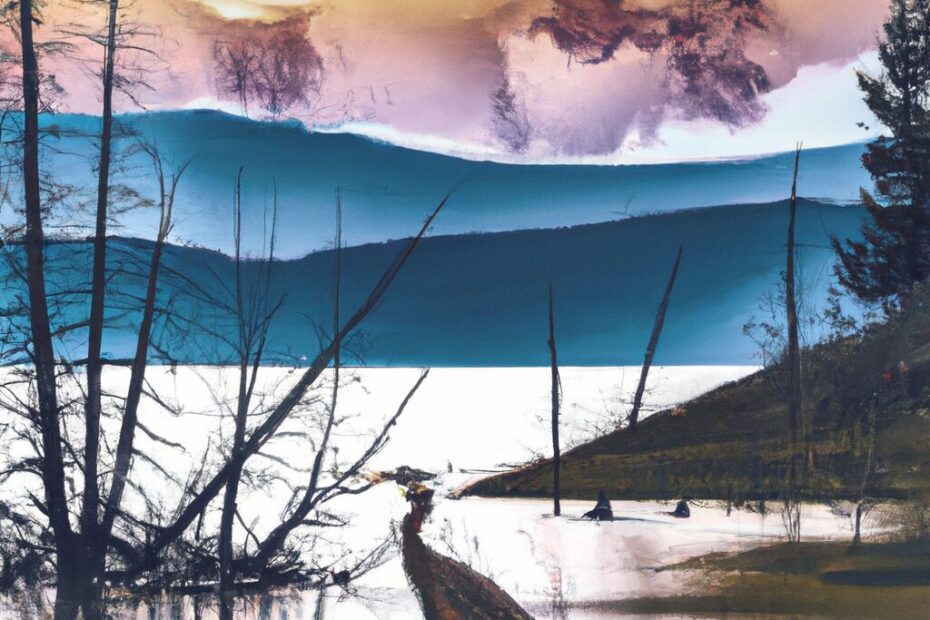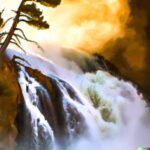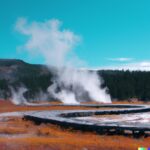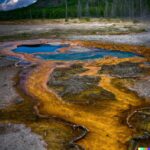Are you planning a trip to Yellowstone National Park and want to witness the incredible natural phenomenon of geysers in action? In this article, we will explore the history of geysers in Yellowstone, including the most famous ones to look out for.
Discover what causes these geothermal wonders to erupt and learn about the best time of year to visit for optimal geyser viewing. Get ready for an unforgettable experience with our tips for visiting geysers in Yellowstone National Park.
Full Yellowstone Geyser Visitor Guide
- Introduction to Yellowstone Geysers
- Plan Your Visit
- Geyser Basins
- Famous Geysers in Yellowstone:
- Visiting Yellowstone Geysers: Tips and Recommendations
- Ranger Programs and Guided Tours
Key Takeaways:
- Yellowstone National Park is home to over 500 geysers, making it the most concentrated geyser region in the world.
- Old Faithful is the most famous geyser in Yellowstone, erupting regularly every 90 minutes.
- Eruptions of geysers are caused by a buildup of heat and pressure within the geothermal system of Yellowstone National Park.
What is a Geyser?
A geyser is a natural hydrothermal feature found in Yellowstone National Park and other geologically active regions, characterized by intermittent eruptions of hot water and steam.
Geyser formations typically occur in areas where there is a combination of heat, water, and underground plumbing systems. The process starts with underground water becoming heated by magma chambers deep beneath the Earth’s surface. As the water reaches extreme temperatures, pressure builds up until eventually, it is expelled in a spectacular display of force and energy.
Read More: View all articles in the Visitor’s Guide category
In Yellowstone National Park, these geysers are a common sight, with the iconic Old Faithful being one of the most famous examples. The park’s unique geology and volcanic activity make it a hotbed for these mesmerizing natural phenomena.
History of Geysers in Yellowstone National Park
The history of geysers in Yellowstone National Park dates back centuries, with early explorers and indigenous peoples marveling at the spectacular displays of thermal activity across the region.
These natural wonders have played a significant role in shaping the understanding of geothermal activity and geology. Notable explorers like John Colter and the Washburn expedition were among the first to document and bring attention to the awe-inspiring features of Yellowstone. Indigenous tribes such as the Shoshone, Bannock, and Crow have long held spiritual connections to the geysers, considering them sacred sites. Yellowstone not only holds cultural significance but also serves as a living laboratory for scientists studying volcanic processes and biodiversity.
How Many Geysers are in Yellowstone National Park?
Yellowstone National Park is home to over 500 geysers, making it the largest concentration of geysers in the world.
Plus the sheer number, the geysers in Yellowstone exhibit a remarkable diversity in terms of size, eruption patterns, and characteristics. These geothermal wonders are not evenly spread across the park but are concentrated in different regions. The famous Upper Geyser Basin, for instance, is home to iconic geysers like Old Faithful, while the Norris Geyser Basin boasts unique hydrothermal features.
The abundance of geysers in Yellowstone is of immense significance, attracting visitors from around the globe to witness the awe-inspiring displays of natural power and beauty. With such a high concentration of geothermal activity, Yellowstone offers a unique opportunity to observe various geysers up close and appreciate the geological forces at work.
What is the Most Famous Geyser in Yellowstone National Park?
The most famous geyser in Yellowstone National Park is the iconic Old Faithful Geyser, renowned for its regular and predictable eruptions that attract millions of visitors each year.
Old Faithful Geyser is a natural marvel that captivates viewers with its powerful eruptions, soaring up to heights of 100 to 180 feet in the air.
One of the unique features of this geyser is its punctual schedule, erupting approximately every 90 minutes, making it a reliable and awe-inspiring spectacle for park visitors.
This geothermal wonder holds cultural significance as well, attracting people from all around the world who gather to witness its majestic displays of boiling water and steam.
What Causes Geysers to Erupt?
The eruption of geysers is primarily caused by the buildup of superheated water and steam underground, triggered by a combination of heat and pressure within the geothermal system.
When water seeps through cracks in the Earth’s crust and reaches hot rocks beneath the surface, it gets heated to temperatures above its boiling point, transforming it into steam. This steam, along with the trapped water, creates immense pressure, leading to explosive releases of water and steam through the geyser’s vent. The geological structure of the geyser also plays a crucial role in the eruption process, with specific channels and plumbing systems dictating how the water and steam rise and erupt, showcasing nature’s intricate design.
What is the Role of Heat and Pressure in Geyser Eruptions?
Heat and pressure play a crucial role in geyser eruptions, with the intense heat from magma chambers below the Earth’s surface and the pressure from confined water sources contributing to the explosive release of steam and water.
When this superheated water reaches a critical point, the pressure build-up becomes immense, eventually leading to an eruption.
The combination of heat and pressure creates a powerful force that propels water and steam high into the air, creating the spectacular geothermal displays we associate with geysers.
Geological factors such as the presence of underground fissures and the specific mineral composition of the rock formations underlying the geyser field also influence the frequency and intensity of geyser activity.
How Does the Geothermal System in Yellowstone National Park Work?
The geothermal system in Yellowstone National Park operates through a network of underground heat sources, including magma chambers, thermal reservoirs, and hydrothermal features like geysers and hot springs.
These thermal features are a direct result of the park’s location on top of a supervolcano, which provides a vast source of underground heat. The heat from the magma chambers below the surface warms up the water in the thermal reservoirs, creating the perfect conditions for geysers and hot springs to form. As the water heats up, pressure builds until it eventually erupts in a spectacular display, shooting steam and water high into the air. This interconnected system of underground heat and water flow is what sustains the geothermal activity that makes Yellowstone such a unique and mesmerizing natural wonder.
Where Can Visitors See Geysers in Yellowstone National Park?
Visitors to Yellowstone National Park can witness geysers at various thermal basins and attractions such as the Upper Geyser Basin, Biscuit Basin, and Black Sand Basin, offering a captivating display of geothermal wonders.
These locations within the park provide a unique opportunity to experience the power and beauty of geysers up close. The Upper Geyser Basin stands out with the renowned Old Faithful Geyser, a must-see iconic attraction that erupts predictably. Biscuit Basin showcases colorful hot springs like Jewel Geyser and Sapphire Pool, creating a stunning contrast against the landscape. Meanwhile, Black Sand Basin entices visitors with its striking black sands and the surreal beauty of Emerald Pool and Opalescent Pool, making it a hidden gem for geyser enthusiasts.
What is the Best Time of Year to Visit Yellowstone National Park for Geyser Viewing?
The best time of year to visit Yellowstone National Park for geyser viewing is during the spring and summer months when most geysers are accessible and the park offers a safe and enjoyable experience for visitors.
During these seasons, the weather is typically milder, allowing visitors to explore the geothermal wonders with ease. The increased daylight hours make it convenient to witness the awe-inspiring eruptions of famous geysers like Old Faithful against the picturesque backdrop of the park.
However, it’s important to note that summer can be a busier time with more crowds, so early mornings or evenings may provide a more peaceful geyser viewing experience.
What are the Most Accessible Geysers in Yellowstone National Park?
Among the most accessible geysers in Yellowstone National Park are those located along the main visitor areas such as Old Faithful, Grand Prismatic Spring, and the boardwalks of the Upper Geyser Basin, providing convenient viewing opportunities for park visitors.
These tourist-friendly geothermal features not only showcase the stunning natural wonders of the park but also make the experience safe and enjoyable for all ages. Visitors can witness Old Faithful’s iconic eruptions on schedule with ample viewing space, while the vibrant colors of the Grand Prismatic Spring captivate onlookers from well-designed pathways. Exploring the boardwalks of the Upper Geyser Basin grants a close-up encounter with remarkable geysers in a controlled setting, ensuring both accessibility and safety.
Are there any Guided Tours for Geyser Viewing in Yellowstone National Park?
Visitors to Yellowstone National Park can participate in guided tours specifically tailored for geyser viewing, led by knowledgeable guides who provide insights into the park’s geothermal features and ensure a safe and educational experience.
These guided tours not only offer visitors the opportunity to witness the mesmerizing geysers up close but also present a chance to delve deeper into the geological marvels of the park. By having expert guides by their side, participants can gain a comprehensive understanding of the unique ecosystem and natural processes that make Yellowstone so special.
The expertise of these guides goes beyond just pointing out landmarks; they are well-versed in the park’s history, geology, and wildlife, enriching the tour with fascinating facts and stories. Through these immersive experiences, visitors can not only marvel at the beauty of the geysers but also gain a newfound appreciation for the intricate workings of nature.
Tips for Visiting Geysers in Yellowstone National Park
When visiting geysers in Yellowstone National Park, it is essential to follow safety guidelines, stay on designated trails, respect wildlife, and carry water and appropriate gear for a comfortable and enjoyable experience.
Yellowstone’s geothermal wonders provide a mesmerizing experience, but visitors must prioritize their safety above all. Pay attention to warning signs indicating heat dangers and the unpredictability of geysers. While capturing the perfect moment may be tempting, never stray off marked paths, as the ground can be fragile and dangerous.
- Remember to keep a safe distance from wildlife encounters to safeguard both their well-being and yours.
- Essential items to pack include sunscreen, sturdy footwear, a camera, and enough water to stay hydrated throughout the adventure.
What Should Visitors Bring for Geyser Viewing?
To ensure a pleasant geyser viewing experience in Yellowstone National Park, visitors should bring essentials such as water, sunscreen, sturdy walking shoes, binoculars for wildlife spotting, and a camera to capture the breathtaking geothermal scenery.
It’s advisable to pack a light jacket or sweater as temperatures can vary greatly in the park, along with a hat and sunglasses to shield against the sun’s glare. Snacks like energy bars or trail mix can be handy for maintaining energy levels during explorations. For photography enthusiasts, a tripod would be beneficial for capturing stable shots of the erupting geysers.
Frequently Asked Questions
What is the best time of year to visit Yellowstone National Park for geyser viewing?
The best time to visit Yellowstone National Park for geyser viewing is during the summer months (June-August). This is when the park is most accessible and the geysers are most active.
Is there a specific geyser that should not be missed at Yellowstone National Park?
Old Faithful is the most famous geyser at Yellowstone National Park and should not be missed. It erupts approximately every 90 minutes and is easily accessible from the Visitor Center.
Are there any safety precautions I should take when visiting the geysers at Yellowstone National Park?
Yes, it is important to stay on designated boardwalks and trails when viewing the geysers. The ground can be unstable and dangerous, and stepping off the designated areas can damage the delicate ecosystem. Also, be sure to follow all posted signs and warnings.
Can I swim in the geysers at Yellowstone National Park?
No, swimming in any of the geysers at Yellowstone National Park is strictly prohibited. The water can reach extremely high temperatures and can be dangerous. Swimming is also harmful to the fragile ecosystem of the park.
Are there any guided tours available for geyser viewing at Yellowstone National Park?
Yes, there are several guided tours available for geyser viewing at Yellowstone National Park. These tours are led by knowledgeable park rangers and provide a more in-depth and educational experience.
Is there an entrance fee for Yellowstone National Park?
Yes, there is an entrance fee for Yellowstone National Park. The current fee for a private, non-commercial vehicle is $35. This fee allows entry into the park for 7 days. There are also annual and interagency passes available for purchase.
Last Updated on April 25, 2024 by Jon Waraas – Originally Posted: February 8, 2024

I’m Jon Waraas, and I’ve been navigating the online world since 2006. By day, I’m the proud owner of some eCommerce gems, and by night, I’m the voice behind the adventures on Waraas.Com.
My heart, however, belongs to the wild beauty of Yellowstone National Park. I’ve got a collection of websites dedicated to sharing the wonders of this natural masterpiece. Oh, and did I mention? I’m currently building my own cabin inside the ghost town of Gilmore, Idaho – a cabin with tales to tell!
When I’m not immersed in the digital realm, you’ll find me lacing up my boots for a good hike or setting up camp under the star-studded sky.




